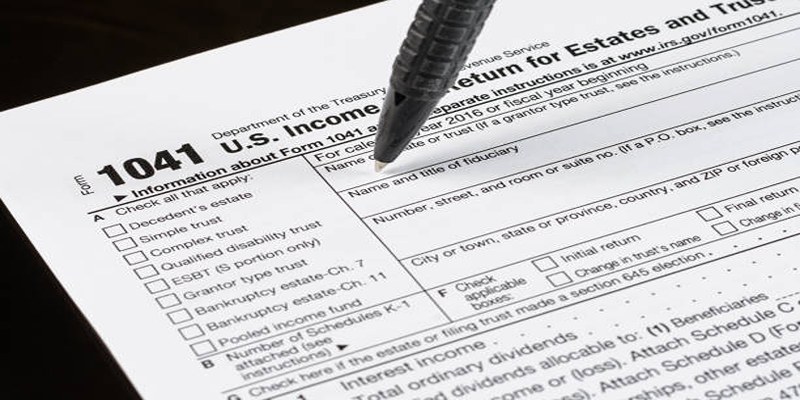Your Complete Guide to BMW 5 Series Insurance Rates
Mar 21, 2024 By Susan Kelly
In your deliberation to ensure the BMW 5 Series, you must grasp the multitude of factors that might affect insurance rates. Numerous elements come into play, each with a potential impact on the cost of insuring this luxury vehicle. Lets discover six factors that affect the insurance rates for the BMW 5 series and the figurative rates as well.
Vehicle Model and Year
The insurance rates are significantly affected by the specific model and year of your BMW 5 Series. Typically, newer models command higher premiums due to their elevated value. Moreover, potential repair costs in case of accidents or damages also contribute to this increase. Consider this: insuring a brand new BMW 5 Series might necessitate an expenditure ranging from $1,500 - $2,500 annually, a stark contrast when compared with the comparatively modest cost for coverage on older models which could be as low as $800, not exceeding $1 million per annum.
Considering the model and year, one must also take into account that luxury features and upgrades can impact insurance rates. High-end trim levels, along with additional features such as premium audio systems or advanced infotainment systems, may escalate the vehicle's value; consequently, this results in higher premiums.
- Consider the resale value: Newer models often have higher resale values, which can result in higher insurance premiums to protect the investment.
- Evaluate optional features: Upgrades such as leather upholstery or panoramic sunroofs may increase the vehicle's value and, consequently, insurance costs.
Safety Features and Technology
Advanced safety systems, such as adaptive cruise control, lane departure warning, and automatic emergency braking, installed in your BMW 5 Series may also impact insurance rates. Insurers offer discounts on premiums for vehicles with these cutting-edge features. The extent of these safety installations determines the discount percentage. It can range from 5% to 15% off standard rates. This variance depends on both insurer policies and the level of equipment provided by manufacturers.

Note the worthiness: safety features potentially trigger discounts. However, this advantage is counterbalanced by potential increases in insurance rates due to the high repair or replacement costs of these advanced systems. In certain scenarios, when damaged safety technology requires repairs or replacement, insurers might impose elevated premiums to address such expenses.
- Consider repair costs: Advanced safety features often require specialized parts and training for repairs, which can increase insurance costs.
- Check for discounts: Some insurance companies offer additional discounts for specific safety features, such as anti-theft systems or parking sensors.
Driver's Age and Driving Record
Insurance companies often consider the age and driving record of the primary driver when calculating premiums. Younger drivers and those with a history of accidents or traffic violations may face higher insurance costs compared to older, more experienced drivers with clean records. For example, a 25-year-old with a few speeding tickets might pay around $2,000 to $3,000 per year to insure a BMW 5 Series, whereas a 40-year-old with a clean driving record might only pay $1,200 to $1,800 annually.
In considering the driver's age and record, one must grasp an essential understanding. Some insurers extend discounts for completing defensive driving courses or maintaining a clean driving record over a specific period.
- Explore defensive driving courses: Completing an accredited defensive driving course can lead to discounts on insurance premiums for drivers of all ages.
- Maintain a clean record: Avoiding accidents and traffic violations can significantly lower insurance costs over time.
Location and Driving Habits
Where you live and how you use your BMW 5 Series can impact insurance rates. Urban areas with higher rates of accidents or vehicle theft may result in higher premiums. Additionally, if you use your vehicle for business purposes or have a long daily commute, your insurance costs may increase. For instance, insuring a BMW 5 Series in a metropolitan area like New York City might cost around $2,500 to $4,000 per year, while insuring the same vehicle in a suburban area could be as low as $1,500 to $2,500 annually.
Not only your place of residence but also the location where you choose to park your vehicle overnight warrants crucial consideration. Opting for a garage or secure lot may yield lower insurance premiums, in contrast to street parking or choosing high-crime areas as your parking spot.
- Factor in parking location: Parking in a secure location can reduce the risk of theft or vandalism, potentially lowering insurance costs.
- Assess local traffic conditions: Areas with heavy traffic congestion or high accident rates may lead to higher insurance premiums to account for increased risk.
Insurance Coverage Options

Your choice of insurance coverage type and level for your BMW 5 Series will indeed impact the premiums. Typically, basic coverage options offer limited protection at a lower cost. In contrast, comprehensive policies provide more extensive protection but carry higher expenses. For instance, selecting basic liability coverage for your BMW 5 Series could incur an annual expense between $1,000 to $1,500. However, opting for comprehensive insurance, encompassing collision and overall protection, may result in costs ranging from $2,000 to $3,000 per year.
Assess your individual needs and risks. This is an essential step in selecting insurance coverage. Consider factors such as the value of your vehicle, a significant determinant for comprehensive or collision coverage, your financial situation which is an indicator of affordability, and any state-mandated insurance requirements that can significantly impact policy choices.
- Review coverage limits: Ensure that your insurance policy provides adequate coverage for potential liabilities and damages, taking into account the value of your BMW 5 Series.
- Explore additional coverage options: Optional coverages such as roadside assistance or rental car reimbursement may provide added peace of mind but can also increase insurance costs.
Insurance Company and Discounts
The insurance company you choose plays a significant role in determining insurance rates for your BMW 5 Series. Each insurer has its criteria for calculating premiums, so it's essential to shop around and compare quotes from multiple providers to find the best rates. Additionally, many insurance companies offer discounts for factors such as bundling multiple policies, having a clean driving record, or completing a defensive driving course. These discounts can range from 5% to 25% off the standard insurance rates, potentially saving hundreds of dollars annually on BMW 5 Series insurance.
In comparing insurance companies, you must consider factors beyond the mere premium cost. Evaluate the financial stability of the insurer. Scrutinize their customer service reputation, a crucial indicator for reliability, and examine how they handle claims, another key determinant in selecting a dependable provider.
- Customer satisfaction ratings: Look for reviews and ratings from existing customers to gauge the insurer's reputation for customer service and claims satisfaction.
- Inquire about available discounts: Ask each insurer about specific discounts they offer and any eligibility requirements, as these discounts can vary significantly between companies.
Conclusion
Understanding the factors influencing BMW 5 Series insurance rates is crucial for securing the right coverage at the best possible price. By considering the vehicle model and year, safety features, driver's age and record, location and driving habits, insurance coverage options, and available discounts, you can make informed decisions when insuring your BMW 5 Series. Be sure to research different insurance companies, compare quotes, and explore discount opportunities to find the most cost-effective coverage that meets your needs.
-
 Taxes Oct 05, 2024
Taxes Oct 05, 2024Understanding Form 1041: A Complete Guide for Estates and Trusts
This guide covers how to file Form 1041, detailing key steps for reporting estate or trust income, deductions, and tax liability, ensuring compliance with IRS regulations.
-
 Know-how Sep 17, 2024
Know-how Sep 17, 2024Mastering TradingView Strategy Tester: A Comprehensive Guide
Enhance your trading performance with effective optimization techniques and advanced tools like the Strategy Tester for informed decision-making.
-
 Investment Mar 21, 2024
Investment Mar 21, 2024Understanding 2 Main Retirement Savings Options
Learn the distinctions between IRA and 401(k) retirement accounts in this comprehensive guide for an understanding of better financial insight.
-
 Know-how Jul 31, 2024
Know-how Jul 31, 2024Should You Switch Your Banks? 9 Reason Why It Is A Good Idea
Discover nine reasons to change banks and improve your financial situation. Learn about better rates, customer service, and more.
